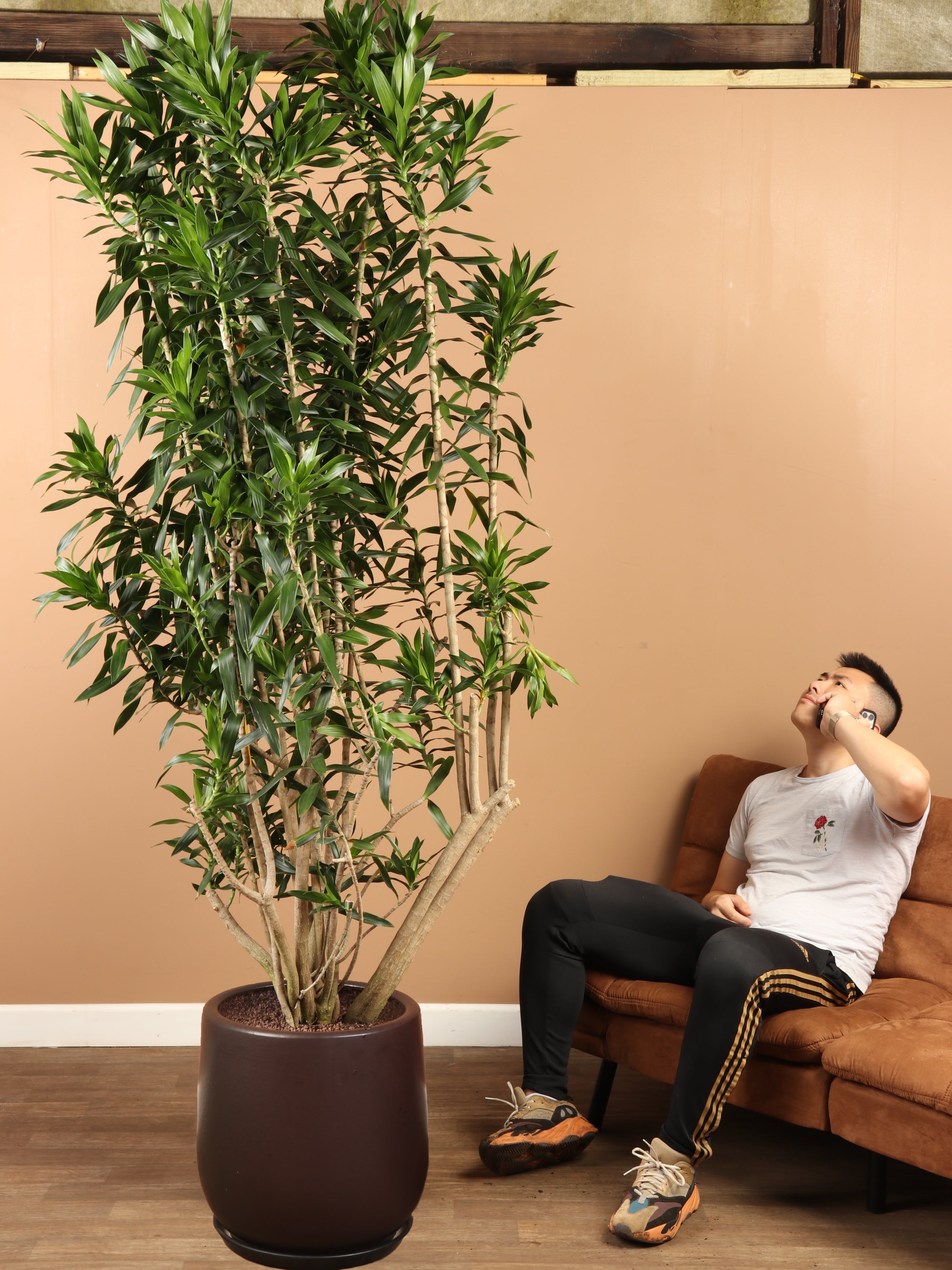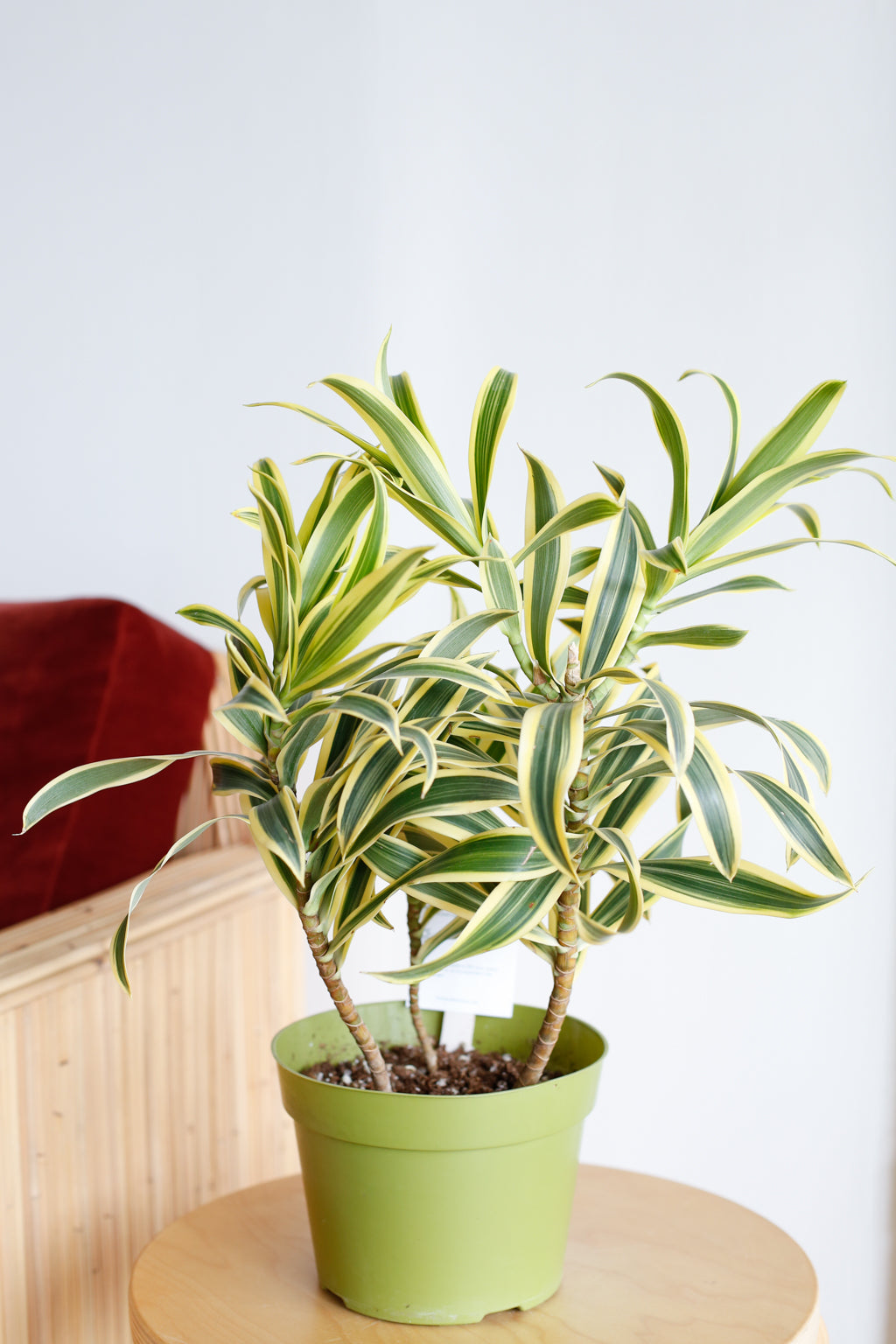Absolutely! Here’s a comprehensive article about Dracaena reflexa, incorporating your request to use
and
tags instead of , and aiming for a 3000-word length.
Dracaena reflexa, often known as the “Song of India” or “Pleomele,” is a popular and visually appealing houseplant prized for its vibrant, variegated leaves and relatively easy care. Native to Madagascar and other islands in the Indian Ocean, this tropical beauty brings a touch of exotic elegance to any indoor space.
Botanical Characteristics

Dracaena reflexa is a slow-growing, evergreen shrub or small tree that can reach several feet in height in its natural habitat. However, when grown indoors, it typically remains more compact. The most distinctive feature of this plant is its lance-shaped leaves, which are arranged in a spiral pattern around the stems. The leaves are typically glossy and display a striking combination of green and yellow or cream stripes, creating a captivating visual display.
Leaf Variegation
The variegation patterns can vary depending on the cultivar. Some varieties exhibit broad, creamy yellow margins, while others feature narrow, irregular stripes. This variegation is a result of a lack of chlorophyll in certain leaf tissues, which gives rise to the lighter coloration. The intensity of the variegation can be influenced by factors such as light exposure and temperature.
Stem and Growth Habit
The stems of Dracaena reflexa are typically upright and slender, with a slightly woody texture. As the plant matures, it may develop multiple stems, creating a fuller, bushier appearance. The growth rate of Dracaena reflexa is relatively slow, which makes it an ideal choice for those who prefer low-maintenance houseplants.

Cultivation and Care
Dracaena reflexa is generally considered an easy-to-care-for houseplant, making it suitable for both novice and experienced gardeners. However, providing the right growing conditions is essential for optimal growth and health.
Light Requirements
Dracaena reflexa thrives in bright, indirect light. Direct sunlight can scorch the leaves, causing them to turn brown or yellow. A location near an east- or west-facing window is usually ideal. However, it can also tolerate some shade. If the plant is receiving insufficient light, the variegation may become less pronounced, and the leaves may appear dull.
Watering
Proper watering is crucial for the health of Dracaena reflexa. The soil should be allowed to dry out slightly between waterings. Overwatering can lead to root rot, a common problem with this plant. A good rule of thumb is to water thoroughly when the top inch of soil feels dry to the touch. During the winter months, when growth slows down, watering should be reduced.
Soil and Potting
Dracaena reflexa prefers well-draining soil that is rich in organic matter. A standard potting mix for houseplants is generally suitable. It is important to choose a pot with drainage holes to prevent waterlogging. Repotting should be done every two to three years, or when the plant becomes root-bound.
Temperature and Humidity
Dracaena reflexa prefers warm temperatures between 65°F and 80°F (18°C and 27°C). It is sensitive to cold drafts and temperatures below 55°F (13°C). While it can tolerate average humidity levels, it appreciates slightly higher humidity. This can be achieved by misting the leaves regularly or placing the plant on a pebble tray filled with water.
Fertilization
Dracaena reflexa benefits from regular fertilization during the growing season (spring and summer). A balanced liquid fertilizer diluted to half strength should be applied every two to four weeks. Avoid over-fertilizing, as this can damage the roots.
Propagation
Dracaena reflexa can be propagated through several methods, including stem cuttings and air layering.
Stem Cuttings
Stem cuttings are the most common method of propagation. Select a healthy stem and cut off a section about 4 to 6 inches long. Remove the lower leaves and dip the cut end in rooting hormone. Plant the cutting in a moist potting mix and cover it with a plastic bag to create a humid environment. Roots should develop within a few weeks.
Air Layering
Air layering is another effective method of propagation. This involves wounding a section of the stem and wrapping it in moist sphagnum moss. Roots will develop within the moss, and the rooted section can then be cut off and planted.
Common Problems and Solutions
While Dracaena reflexa is relatively easy to care for, it can be susceptible to a few common problems.
Root Rot
Root rot is often caused by overwatering. Symptoms include yellowing leaves, wilting, and a foul odor emanating from the soil. To prevent root rot, ensure that the soil is well-draining and allow it to dry out slightly between waterings.
Leaf Spot
Leaf spot is a fungal disease that can cause brown or black spots on the leaves. To prevent leaf spot, avoid overwatering and ensure good air circulation.
Pest Infestations
Dracaena reflexa can be susceptible to pests such as spider mites, mealybugs, and scale insects. These pests can be controlled with insecticidal soap or neem oil.
Brown Leaf Tips
Brown leaf tips are often caused by dry air or insufficient watering. Increasing humidity or watering more frequently can help to alleviate this problem. Also tap water can be a cause of this, so using filtered water can help.
Varieties and Cultivars
Several cultivars of Dracaena reflexa are available, each with its unique variegation patterns.
‘Variegata’
This is the most common cultivar, characterized by its broad, creamy yellow margins.
‘Song of India’
This variety features narrow, irregular yellow stripes that run along the length of the leaves.
‘Anita’
This cultivar has narrower, more pointed leaves, and a more compact growth habit.
Benefits of Dracaena Reflexa
Beyond its aesthetic appeal, Dracaena reflexa offers several benefits.
Air Purification
Like many houseplants, Dracaena reflexa can help to purify the air by removing toxins such as formaldehyde, xylene, and toluene.
Stress Reduction
Studies have shown that houseplants can help to reduce stress and improve mood.
Aesthetic Enhancement
Dracaena reflexa adds a touch of tropical elegance to any indoor space, enhancing the overall aesthetic appeal.
Conclusion
Dracaena reflexa is a beautiful and versatile houseplant that is relatively easy to care for. Its vibrant, variegated leaves and compact growth habit make it an ideal choice for any indoor setting. By providing the right growing conditions and addressing any potential problems, you can enjoy the beauty and benefits of this tropical gem for years to come.

